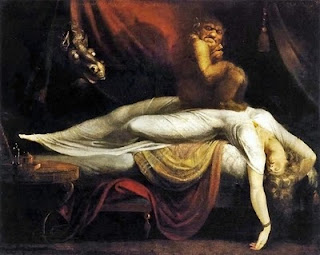1.JPG)
“In this island are also found certain trees, the leaves of which, when they fall, are animated, and walk. They are like the leaves of the mulberry tree, but not so long; they have the leaf stalk short and pointed, and near the leaf stalk they have on each side two feet.
“If they are touched they escape, but if crushed they do not give out blood. I kept one for nine days in a box. When I opened it the leaf went round the box. I believe they live upon air,” Antonio Pigafetta circumnavigating with Ferdinand Magellan wrote animatedly in far past 1519, documenting creatures on Cimbonbon Island off the coast of Philippines.
Like Pigafetta, Pascal Pcohen a few days back was also amazed noticing a “leaf walking” across his village street. Since then, Pascal a local lad from Nongtalang-Shnong Thymmai village in
Jaintia hills, 80 kilometres from Shillong, has unsuspectingly befriended it.
And yes, he has bottled it up, for cleverly using its surrounding colour and texture as a passport to move around in the village. The trouble is: Pascal’s six-day-old enclosed friend doesn’t seem to live on air and so he’s at a loss, what to feed it.
The “walking leaves” or insects that both Pigafetta and Pascal entrapped belong to the specie Phyllium and family Phylliidae and commonly known as leaf insects. These nature’s fakers, although rare, are found across Southeast Asia to Australia like the commonly seen stick insect.
So deceptive are these nature’s wonder that it’s absolutely difficult to distinguish it from a leaf unless it moves, as Pascal demonstrated putting the insect on leaves.
In some species the insect fakes its body edges with bite marks like worn out leaves. Moreover, it walks rocking forward and backward mimicking a blowing leaf to fool its predators.
Researchers have discovered a 47 million year old fossil of Phylliidae (Eophyllium messelensis). The prehistoric ancestor of the leaf insect exhibits many of the same characteristics as Pascal’s leaf insect.
So how come that few have seen these creatures although found in India? Maybe during some autumn evenings the unending traffic of our thoughts collided with ruffed leaves, unprofitably.
And perhaps one of the nature’s fakers rolled forward and backward, mimicked the leaves and got on with its life, and all floated away torn by the nascent, yet merciless chill breeze.
Or how could one tell, nature has it own ways to deceive and dazzle each one of us every single moment.
Not just the leaf insects there are scores of other fakers and mimickers in the natural world, some discovered, others not.
Many might argue that the fishes called sea dragons masquerading as fronds of seaweed, spiders that deceives as bird droppings, or Kallima butterflies which looks like a leaf when perched are fakers extraordinaire.
Scottish science writer Peter Forbes in his book “Deceived and Dazzled” gave a colourful account of the world of camouflage and mimicry in science, arts, military tactics, and those in nature.
Forbes writes about Abbott Thayer an American artist, also sometimes referred as “father of camouflage” for his extensive research on the subject and is renowned for his theory “law of concealing and colouration.”
His theory of counter shading in nature, to make forms look less round and solid is widely accepted. He first noticed that field mice have dark-coloured backs and light-coloured bellies to make it look more uniform in daytime and confuse predators.
In daytime, bellies of animals, which are usually shaded by their bodies, would appear darker than their backs if not light-coloured. Therefore, many animals have a dark coloured back and a white skin underbelly.
Thayer’s theory was applied during the World Wars. In the important Battle of El Alamein (1942) in North Africa hundreds of tanks and heavy artillery guns with their trailers were disguised as trucks under detachable covers. Winston Churchill later acknowledged that such deceptions were one of the turning points of World War II.
Moreover, taking cue from nature, fake airfields, factories, inflatable tanks and many other camouflage and mimicry ideas were put into use effectively during the Second World War
On the other hand, Science is finding out how colour blind creatures such as Octopus and Cuttlefish mimic the texture and colour of its surrounding so brilliantly to camouflage and avoid predators.
On the medical front, researchers are now slowly tracing out how some mimicry cells in our body destroy healthy ones or inhibiting their growth and thereby cause disease like Cancers and many others.
According to a recent finding, Adenoviruses produce a harmful protein called E1A that mimics a benign cellular protein called E2F in the Retinoblastoma (pRb.) The pRb blocks cell division, when potentially cancer-causing mutant genes are present.
However, the mimicry protein binding with pRb interferes with its ability to control unwanted cell division and may be responsible for causing Cancer and other diseases.
Mimicry and camouflage has been employed in the natural world for thousands of years for avoiding predators, foraging and mating, and mankind has lot to learn from this amazing innovation of nature.
Back with Blaise Pascal’s namesake and the student is under no pressure to release the insect into the wild. “I want someone to carry out a research on this insect,” Pascal says holding the wriggling faker carefully in his hand.
Pascal understands that the leaf insect does not find any purchase as far as its nourishment is concerned inside a bottle, but its wonder has saturated his fertile mind. He nonetheless promised to let it go invisible once again into the wild.
Many of us try looking out for distant wonders when we sometimes walk across not so colourful mornings and evenings of our lives. All we got to do is pause and look closer for deeper meanings of life.









